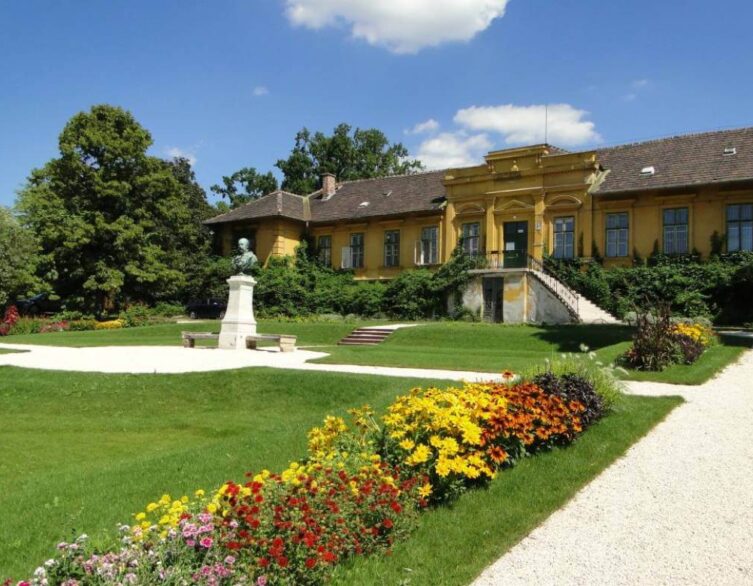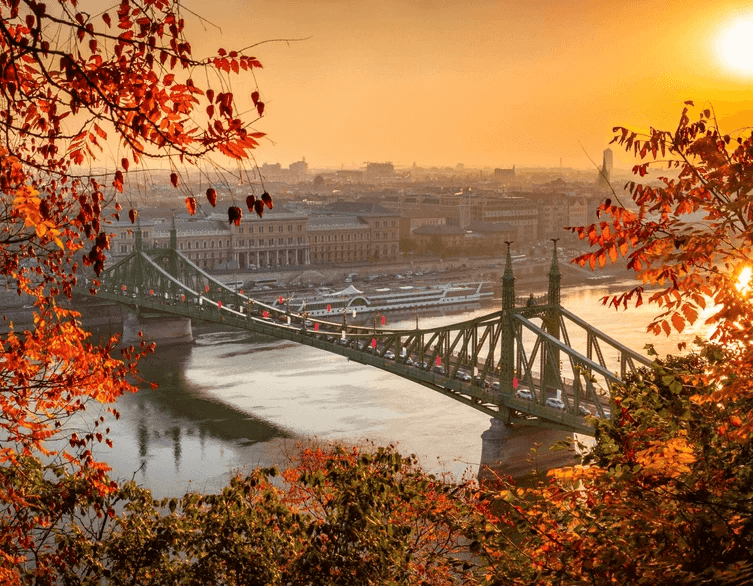Budapest’s Budai Arboretum Receives Protected Historic Garden Status

Tucked away at the southern foot of Gellért Hill, one of Budapest’s most extraordinary green spaces has just earned a new level of recognition. The Budai Arboretum, a 7.5-hectare treasure that has served as Hungary’s horticultural education cradle for over 130 years, has been officially designated as a protected historic garden, adding another layer of preservation to this remarkable living museum.
A Living Classroom with Century-Old Trees
Walking through the Budai Arboretum feels like stepping into a botanical time capsule. This isn’t just another city park where you might stroll on a sunny afternoon. It’s an active research facility, an outdoor classroom, and home to one of Hungary’s most significant plant collections, where trees that have witnessed more than a century of Budapest’s history provide shade for today’s youngest generation of botanical researchers.
The arboretum currently belongs to the Hungarian University of Agriculture and Life Sciences campus, continuing its long tradition as an educational institution. Nearly 2,000 species and varieties of woody ornamental plants grow here, along with hundreds of bulb flowers and almost 250 types of perennial ornamental plants. For students studying horticulture and landscape architecture, this living collection serves as both textbook and laboratory, offering hands-on learning opportunities that no indoor classroom could replicate.
Rare Trees and Botanical Treasures
Among the arboretum’s collection, several trees stand out as genuine rarities. In the Upper Garden grows a bitter hickory tree exceeding 120 years old, one of the oldest specimens in the entire park. Perhaps even more fascinating is the Ginkgo biloba, known commonly as the maidenhair tree, which also ranks among the arboretum’s most ancient residents. This particular ginkgo gained a moment of fame recently when it appeared in a film by acclaimed Hungarian director Ildikó Enyedi, bringing cinematic attention to the arboretum’s botanical significance.
Many specimens here exist as the only representatives of their species in Hungary, while others have become unique simply through their impressive age and the care they’ve received over generations. These aren’t just trees, they’re living connections to Budapest’s past, growing here since before automobiles filled the streets and the modern city took its current form.
Best deals of Budapest
A History of Protection and Preservation
The new historic garden designation, granted in autumn 2025 through the Ministry of Construction and Transport at the initiative of the Hungarian Garden Heritage Foundation, represents the latest chapter in the arboretum’s protection story. Since 1975, the park has held protected natural area status from the City of Budapest as a collection garden, recognizing its botanical importance. The 2005 monument protection designation acknowledged the site’s architectural and cultural value. Now, with historic garden status, the arboretum receives recognition specifically for its unique garden design elements representing different eras and styles.
This triple layer of protection reflects the arboretum’s multifaceted significance. It’s simultaneously a gene collection preserving plant diversity, a natural treasure supporting Budapest’s urban ecosystem, and a masterpiece of human-designed landscape architecture showcasing evolving garden design philosophies across more than a century.
Where Horticultural Education Began
The story begins 131 years ago when Károly Räde, Budapest’s city garden director at the time, planted the first tree on this site. The location became home to Hungary’s first horticultural school, establishing the foundation for professional gardening and landscape architecture education that continues today. Generation after generation of Hungarian gardeners and landscape architects have learned their craft here, studying plant identification in these living collections and absorbing design principles from the garden’s various sections.
Different Gardens, Different Eras
What makes the Budai Arboretum particularly fascinating from a landscape architecture perspective is how different sections preserve distinct design approaches from various periods. The oldest area, the Upper Garden designed by Räde himself, follows the systematic botanical arrangement popular in his era. Its distinctive path network and rock garden reflect late 19th-century thinking about how botanical gardens should organize and display plant collections.
The Ornamental Court, or Dísztér, tells a different story. Although its appearance changed several times through the decades, a 2011 reconstruction returned it to the geometric, clean-lined design created by Béla Rerrich in the 1920s. This formal garden represents the modernist aesthetic that influenced Hungarian landscape architecture between the World Wars, with its emphasis on clear mathematical forms and restrained ornamentation.
The Lower Garden developed in multiple phases and represents newer approaches to landscape design. The Ormos Garden, situated between two buildings, maintains its original structure from the 1960s when it became integrated into the arboretum. The larger Lower Garden area was created from the 1970s onward under Gábor Schmidt’s leadership, using a landscape garden approach where plants in themed collections were arranged primarily according to their environmental needs rather than botanical classification. This ecological approach continues to guide planting decisions today.
Architectural Elements Worth Noting
Beyond the plants themselves, the arboretum contains numerous built elements that contribute to its historic character. Pergolas supporting climbing plant collections create shaded walkways and vertical growing opportunities. Rock gardens provide specialized growing conditions for alpine and other plants requiring excellent drainage and specific soil conditions. A garden pond adds aquatic habitat diversity, while the greenhouse, renovated in 2011, provides protected space for the tropical and subtropical plant collection.
The historic fence and retaining wall system, now more than a century old, defines the arboretum’s boundaries and creates the terraced levels that give the garden its distinctive topography. These aren’t merely functional structures but historic artifacts in their own right, built with materials and techniques that reflect early 20th-century construction methods.
A Green Island in the City
For visitors to Budapest, the Budai Arboretum offers something quite different from the city’s famous tourist attractions. While you won’t find it prominently featured in most guidebooks alongside the Parliament Building or Széchenyi Thermal Bath, this makes it all the more special for those who discover it. The arboretum provides an oasis of tranquility where the sounds of traffic fade away, replaced by birdsong and rustling leaves.
The rich flora naturally attracts diverse fauna, creating a complete ecosystem within the city. Birds nest in the mature trees, insects pollinate the flowering plants, and the garden supports biodiversity that extends far beyond its plant collections. Walking these paths, you’re experiencing the kind of nature-rich urban green space that cities increasingly recognize as essential for both ecological health and human wellbeing.
What the New Protection Means
The historic garden designation carries real significance beyond symbolic recognition. It formally acknowledges that the various garden sections, each representing different ages and design philosophies, possess unique garden architecture value as human-created landscapes. This protection complements the existing natural conservation status and general monument protection, creating comprehensive preservation that addresses all aspects of the arboretum’s significance.
As Sándor Bardóczi, Budapest’s chief landscape architect, noted about the new protection, it represents his generation fulfilling their commitment to preserve this special place. The recognition honors promises made by earlier generations of landscape architects who understood the arboretum’s irreplaceable value and worked to ensure its preservation for the future.
A Resource for Research and Testing
While its educational role remains central, the Budai Arboretum also functions as a vital research and development facility. Researchers use the site to test new plant varieties and experiment with species that might thrive in Budapest’s climate. As climate change alters growing conditions, having a place where horticultural professionals can evaluate how different plants perform becomes increasingly important. The arboretum serves as a testing ground where new introductions prove themselves before wider adoption in urban landscaping and private gardens.
This practical research function means the arboretum remains dynamic rather than static. New plants arrive, experiments unfold, and knowledge accumulates, all while the historic character of the various garden sections receives careful preservation. It’s a delicate balance between honoring the past and preparing for the future.
Discovering This Hidden Treasure
The Budai Arboretum may not yet have the international fame of some Budapest attractions, but for visitors seeking authentic, less-crowded experiences, it offers genuine discovery. Here, you can wander paths shaded by trees that were already mature when your great-grandparents were young, observe students sketching botanical specimens just as generations did before them, and experience a side of Budapest that most tourists never encounter.
The new protected historic garden status ensures this extraordinary place will continue serving future generations of students, researchers, and visitors. It’s a recognition that some spaces transcend simple categories, they’re simultaneously natural preserves, educational institutions, cultural heritage sites, and community treasures. The Budai Arboretum embodies all these roles, remaining a green island where Budapest’s horticultural heritage grows stronger with each passing season.
Related news
Related attractions





















